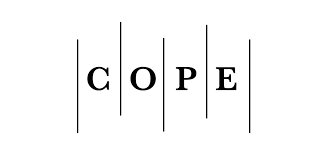Review of Collective Decision Making in Swarm Robotics
DOI:
https://doi.org/10.29304/jqcsm.2024.16.11436Keywords:
Swarm Robotics, Collective Decision Making, Evolutionary RoboticsAbstract
Swarm robotics is a distinctive type of multi-robotic system that relies on local communication among the swarm members to generate a desired global behaviour. This implies a lack of global information, requiring robots to sense and communicate using sensors and actuators located on their bodies. Consequently, the robots within the swarm must leverage collective intelligence to solve the problem at hand, as no individual robot can accomplish the task independently. This article provides an overview of swarm robotics in general, highlighting its characteristics that distinguish it from other multi-robotic systems and simultaneously serve as motivation to adopt a swarm robotics approach. A closer examination of collective decision making within swarm robotics and its design problem also provided, classifying design methods into manual design and automatic approaches. The most commonly used automatic approaches to design collective decision making in swarm robotics are explained, along with a mention of the benefits and drawbacks of such approaches. However, this review does not cover aspects such as the swarm collective behaviours – except collective decision making – and the swarm robotics tasks.
Downloads
References
M. H. Mohammed, ‘On the Design of Cooperative Transport Strategies for Swarm Robotic Systems’, Doctoral dissertation, Aberystwyth University ;; (Computer Science), 2018.
L. Garattoni, M. Birattari, and J. G. Webster, ‘Swarm robotics’, Wiley Encycl. Electr. Electron. Eng., vol. 10, 2016.
M. Brambilla, E. Ferrante, M. Birattari, and M. Dorigo, ‘Swarm robotics: a review from the swarm engineering perspective’, Swarm Intell., vol. 7, no. 1, pp. 1–41, Mar. 2013, doi: 10.1007/s11721-012-0075-2.
E. Şahin, ‘Swarm Robotics: From Sources of Inspiration to Domains of Application’, in Swarm Robotics, E. Şahin and W. M. Spears, Eds., in Lecture Notes in Computer Science. Berlin, Heidelberg: Springer, 2005, pp. 10–20. doi: 10.1007/978-3-540-30552-1_2.
M. Dorigo, M. Birattari, and M. Brambilla, ‘Swarm robotics’, Scholarpedia, vol. 9, no. 1, p. 1463, Jan. 2014, doi: 10.4249/scholarpedia.1463.
S. Mitri, S. Wischmann, D. Floreano, and L. Keller, ‘Using robots to understand social behaviour’, Biol. Rev., vol. 88, no. 1, pp. 31–39, 2013, doi: 10.1111/j.1469-185X.2012.00236.x.
G. Valentini, E. Ferrante, and M. Dorigo, ‘The Best-of-n Problem in Robot Swarms: Formalization, State of the Art, and Novel Perspectives’, Front. Robot. AI, vol. 4, Mar. 2017, doi: 10.3389/frobt.2017.00009.
H. Hamann, Swarm Robotics: A Formal Approach. Cham: Springer International Publishing, 2018. doi: 10.1007/978-3-319-74528-2.
G. Valentini, Achieving Consensus in Robot Swarms, vol. 706. in Studies in Computational Intelligence, vol. 706. Cham: Springer International Publishing, 2017. doi: 10.1007/978-3-319-53609-5.
V. Trianni, E. Tuci, C. Ampatzis, and M. Dorigo, ‘Evolutionary swarm robotics: A theoretical and methodological itinerary from individual neuro-controllers to collective behaviours’, Horiz. Evol. Robot., vol. 153, 2014.
C. R. Reid, S. Garnier, M. Beekman, and T. Latty, ‘Information integration and multiattribute decision making in non-neuronal organisms’, Anim. Behav., vol. 100, pp. 44–50, Feb. 2015, doi: 10.1016/j.anbehav.2014.11.010.
V. Trianni and S. Nolfi, ‘Engineering the Evolution of Self-Organizing Behaviors in Swarm Robotics: A Case Study’, Artif. Life, vol. 17, no. 3, pp. 183–202, Jul. 2011, doi: 10.1162/artl_a_00031.
M. K. Heinrich, M. Wahby, M. Dorigo, and H. Hamann, ‘Swarm Robotics’, in Cognitive Robotics, A. Cangelosi and M. Asada, Eds., The MIT Press, 2022, pp. 77–98. doi: 10.7551/mitpress/13780.003.0009.
J. Schaber, A. Lapytsko, and D. Flockerzi, ‘Nested autoinhibitory feedbacks alter the resistance of homeostatic adaptive biochemical networks’, J. R. Soc. Interface, vol. 11, no. 91, p. 20130971, Feb. 2014, doi: 10.1098/rsif.2013.0971.
V. Trianni, Evolutionary Swarm Robotics: Evolving Self-Organising Behaviours in Groups of Autonomous Robots. Springer, 2008.
L. S. Marcolino and L. Chaimowicz, ‘No robot left behind: Coordination to overcome local minima in swarm navigation’, in 2008 IEEE International Conference on Robotics and Automation, Pasadena, CA, USA: IEEE, May 2008, pp. 1904–1909. doi: 10.1109/ROBOT.2008.4543485.
C. Pinciroli and G. Beltrame, ‘Buzz: A Programming Language for Robot Swarms’, IEEE Softw., vol. 33, no. 4, pp. 97–100, Jul. 2016, doi: 10.1109/MS.2016.95.
M. Brambilla, A. Brutschy, M. Dorigo, and M. Birattari, ‘Property-Driven Design for Robot Swarms: A Design Method Based on Prescriptive Modeling and Model Checking’, ACM Trans. Auton. Adapt. Syst., vol. 9, no. 4, pp. 1–28, Jan. 2015, doi: 10.1145/2700318.
M. Wahby, J. Petzold, C. Eschke, T. Schmickl, and H. Hamann, ‘Collective Change Detection: Adaptivity to Dynamic Swarm Densities and Light Conditions in Robot Swarms’, 2019.
J. C. Bongard, ‘Evolutionary robotics’, Commun. ACM, vol. 56, no. 8, pp. 74–83, Aug. 2013, doi: 10.1145/2493883.
A. Scheidler, A. Brutschy, E. Ferrante, and M. Dorigo, ‘The ${k}$ -Unanimity Rule for Self-Organized Decision-Making in Swarms of Robots’, IEEE Trans. Cybern., vol. 46, no. 5, pp. 1175–1188, May 2016, doi: 10.1109/TCYB.2015.2429118.
G. De Masi, J. Prasetyo, E. Tuci, and E. Ferrante, ‘Zealots Attack and the Revenge of the Commons: Quality vs Quantity in the Best-of-n’, in Swarm Intelligenc, in Lecture Notes in Computer Science. Cham: Springer International Publishing, 2020, pp. 256–268. doi: 10.1007/978-3-030-60376-2_20.
M. S. Talamali, A. Saha, J. A. R. Marshall, and A. Reina, ‘When less is more: Robot swarms adapt better to changes with constrained communication’, Sci. Robot., vol. 6, no. 56, p. eabf1416, Jul. 2021, doi: 10.1126/scirobotics.abf1416.
A. Reina, G. Valentini, C. Fernández-Oto, M. Dorigo, and V. Trianni, ‘A Design Pattern for Decentralised Decision Making’, PLOS ONE, vol. 10, no. 10, p. e0140950, Oct. 2015, doi: 10.1371/journal.pone.0140950.
F. Canciani, M. S. Talamali, J. A. Marshall, T. Bose, and A. Reina, ‘Keep calm and vote on: Swarm resiliency in collective decision making’, in Proceedings of workshop resilient robot teams of the 2019 ieee international conference on robotics and automation (ICRA 2019), 2019.
G. D. Masi, J. Prasetyo, R. Zakir, N. Mankovskii, E. Ferrante, and E. Tuci, ‘Robot swarm democracy: the importance of informed individuals against zealots’, Swarm Intell., vol. 15, no. 4, pp. 315–338, Dec. 2021, doi: 10.1007/s11721-021-00197-3.
J. T. Ebert, M. Gauci, and R. Nagpal, ‘Multi-feature collective decision making in robot swarms’, in Proceedings of the 17th International Conference on Autonomous Agents and MultiAgent Systems, 2018, pp. 1711–1719.
M. D. Soorati, M. Krome, M. Mora-Mendoza, J. Ghofrani, and H. Hamann, ‘Plasticity in Collective Decision-Making for Robots: Creating Global Reference Frames, Detecting Dynamic Environments, and Preventing Lock-ins’, in 2019 IEEE/RSJ International Conference on Intelligent Robots and Systems (IROS), Macau, China: IEEE, Nov. 2019, pp. 4100–4105. doi: 10.1109/IROS40897.2019.8967777.
G. Valentini, H. Hamann, and M. Dorigo, ‘Self-organized collective decision making: the weighted voter model.’, in AAMAS, 2014, pp. 45–52.
P. A. Vargas, E. A. D. Paolo, I. Harvey, and P. Husbands, The Horizons of Evolutionary Robotics. MIT Press, 2014.
G. Francesca and M. Birattari, ‘Automatic Design of Robot Swarms: Achievements and Challenges’, Front. Robot. AI, vol. 3, May 2016, doi: 10.3389/frobt.2016.00029.
S. Koos, J.-B. Mouret, and S. Doncieux, ‘The Transferability Approach: Crossing the Reality Gap in Evolutionary Robotics’, IEEE Trans. Evol. Comput., vol. 17, no. 1, pp. 122–145, Feb. 2013, doi: 10.1109/TEVC.2012.2185849.
G. Francesca, M. Brambilla, V. Trianni, M. Dorigo, and M. Birattari, ‘Analysing an Evolved Robotic Behaviour Using a Biological Model of Collegial Decision Making’, in From Animals to Animats 12, in Lecture Notes in Computer Science. Berlin, Heidelberg: Springer, 2012, pp. 381–390. doi: 10.1007/978-3-642-33093-3_38.
A. Almansoori, M. Alkilabi, J.-N. Colin, and E. Tuci, ‘On the Evolution of Mechanisms for Collective Decision Making in a Swarm of Robots’, in Artificial Life and Evolutionary Computation, J. J. Schneider, M. S. Weyland, D. Flumini, and R. M. Füchslin, Eds., in Communications in Computer and Information Science. Cham: Springer Nature Switzerland, 2022, pp. 109–120. doi: 10.1007/978-3-031-23929-8_11.
S. Nolfi and D. Floreano, Evolutionary robotics: The biology, intelligence, and technology of self-organizing machines. MIT press, 2000.
A. Almansoori, M. Alkilabi, and E. Tuci, ‘On the evolution of adaptable and scalable mechanisms for collective decision-making in a swarm of robots’, Swarm Intell., Jan. 2024, doi: 10.1007/s11721-023-00233-4.
G. Francesca, M. Brambilla, A. Brutschy, V. Trianni, and M. Birattari, ‘AutoMoDe: A novel approach to the automatic design of control software for robot swarms’, Swarm Intell., vol. 8, no. 2, pp. 89–112, Jun. 2014, doi: 10.1007/s11721-014-0092-4.
G. Valentini, D. Brambilla, H. Hamann, and M. Dorigo, ‘Collective Perception of Environmental Features in a Robot Swarm’, in Swarm Intelligence, in Lecture Notes in Computer Science. Cham: Springer International Publishing, 2016, pp. 65–76. doi: 10.1007/978-3-319-44427-7_6.
M. H. M. Alkilabi, A. Narayan, and E. Tuci, ‘Cooperative object transport with a swarm of e-puck robots: robustness and scalability of evolved collective strategies’, Swarm Intell., vol. 11, no. 3, pp. 185–209, Dec. 2017, doi: 10.1007/s11721-017-0135-8.
A. Almansoori, M. Alkilabi, and E. Tuci, ‘A Comparative Study on Decision Making Mechanisms in a Simulated Swarm of Robots’, in 2022 IEEE Congress on Evolutionary Computation (CEC), Jul. 2022, pp. 1–8. doi: 10.1109/CEC55065.2022.9870208.
A. Almansoori, M. Alkilabi, and E. Tuci, ‘Further investigations on the characteristics of neural network based opinion selection mechanisms for robotic swarms’.
A. Ligot, K. Hasselmann, and M. Birattari, ‘AutoMoDe-Arlequin: Neural Networks as Behavioral Modules for the Automatic Design of Probabilistic Finite-State Machines’, in Swarm Intelligence, vol. 12421, Eds., in Lecture Notes in Computer Science, vol. 12421. , Cham: Springer International Publishing, 2020, pp. 271–281. doi: 10.1007/978-3-030-60376-2_21.
V. Strobel, E. Castelló Ferrer, and M. Dorigo, ‘Managing byzantine robots via blockchain technology in a swarm robotics collective decision making scenario’, 2018.
Downloads
Published
How to Cite
Issue
Section
License
Copyright (c) 2024 Rusul Ibrahim, Muhanad Alkilabi, Ali Retha Hasoon Khayeat, Elio Tuci

This work is licensed under a Creative Commons Attribution-NonCommercial-NoDerivatives 4.0 International License.













